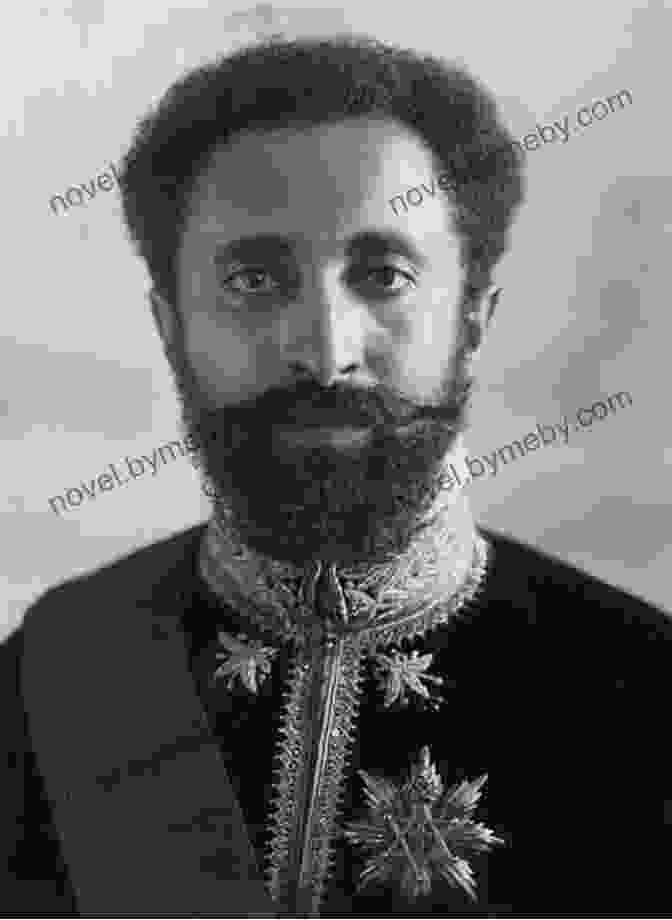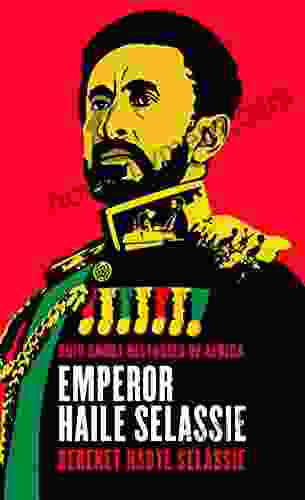Early Life and Education
Haile Selassie was born Tafari Makonnen in 1892 in Ejersa Goro, Ethiopia. He was the son of Ras Makonnen, a powerful regional governor, and Woizero Yeshimebet Ali. From a young age, Tafari displayed intelligence and ambition.
In 1905, Tafari was appointed governor of Harar, a strategic province in eastern Ethiopia. He quickly implemented reforms that improved the lives of the people and strengthened the province's economy. Tafari's success in Harar caught the attention of the Emperor, Menelik II.
In 1916, Menelik II died and Tafari became regent for the young heir, Iyasu V. Tafari ruled Ethiopia with increasing authority until 1930, when Iyasu V was formally deposed and Tafari was crowned Emperor Haile Selassie I.
Reign and Reforms
Haile Selassie's reign was marked by numerous reforms and modernizations. He introduced a new constitution, established a modern army and police force, and improved infrastructure. Haile Selassie also worked to promote education and public health throughout Ethiopia.
One of Haile Selassie's most significant achievements was the establishment of the Organisation of African Unity (OAU) in 1963. The OAU was a major step towards African unity and cooperation, and Haile Selassie served as its first chairman.
Italian Occupation and World War II
In 1935, Italy invaded Ethiopia in an attempt to establish a new Italian Empire in Africa. Haile Selassie led the Ethiopian resistance against the Italian occupation, but was forced to flee the country in 1936.
Haile Selassie established a government-in-exile in London and lobbied for international support for Ethiopia's liberation. He addressed the League of Nations in Geneva, denouncing Italy's aggression and calling for collective action.
In 1941, British and Commonwealth forces liberated Ethiopia from Italian occupation. Haile Selassie returned to his country as a triumphant hero.
Post-War Era and African Leadership
After the war, Haile Selassie continued to play a prominent role in African affairs. He was a founding member of the United Nations and served on the Security Council. Haile Selassie also chaired the Organisation of African Unity for many years.
Haile Selassie's leadership and commitment to African unity and independence inspired many people around the world, including the Rastafari movement. The Rastafari movement regards Haile Selassie as the embodiment of God and the rightful king of Africa.
Overthrow and Death
In 1974, Haile Selassie was overthrown in a military coup led by the Derg, a group of young military officers. The Derg accused Haile Selassie of corruption and mismanagement, and placed him under house arrest.
Haile Selassie died in 1975 under mysterious circumstances. The official cause of death was given as natural causes, but many believe that he was assassinated by the Derg.
Legacy and Impact
Emperor Haile Selassie was a remarkable figure in African history. He ruled Ethiopia for over 40 years, during which time he implemented numerous reforms and modernizations. Haile Selassie was also a staunch advocate for African unity and independence.
Haile Selassie's legacy is complex and controversial. He was a progressive ruler who brought Ethiopia into the modern world, but he was also authoritarian and intolerant of dissent.
Despite his flaws, Haile Selassie remains an important figure in African history. He is remembered as a symbol of resistance against colonialism, a pioneer of African unity, and a charismatic leader who inspired millions of people around the world.



























































































